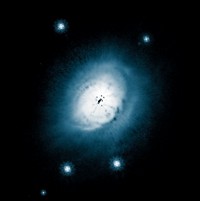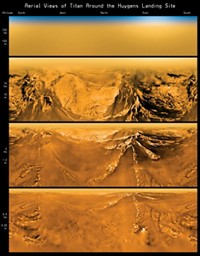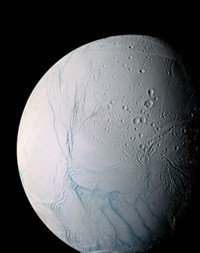Advertisement
Grab your lab coat. Let's get started
Welcome!
Welcome!
Create an account below to get 6 C&EN articles per month, receive newsletters and more - all free.
It seems this is your first time logging in online. Please enter the following information to continue.
As an ACS member you automatically get access to this site. All we need is few more details to create your reading experience.
Not you? Sign in with a different account.
Not you? Sign in with a different account.
ERROR 1
ERROR 1
ERROR 2
ERROR 2
ERROR 2
ERROR 2
ERROR 2
Password and Confirm password must match.
If you have an ACS member number, please enter it here so we can link this account to your membership. (optional)
ERROR 2
ACS values your privacy. By submitting your information, you are gaining access to C&EN and subscribing to our weekly newsletter. We use the information you provide to make your reading experience better, and we will never sell your data to third party members.
Physical Chemistry
Alcohol And Sugar Molecule Spotted On Comet For First Time
Astronomy: Complex organics formed in nascent solar system, study suggests
by Elizabeth K. Wilson
October 25, 2015
| A version of this story appeared in
Volume 93, Issue 42

Astronomers have for the first time detected ethanol and the simple sugar glycolaldehyde in a comet (Sci. Adv. 2015, DOI: 10.1126/sciadv.1500863).
The observations add to the rapidly growing roster of complex organics found in comets and bolster the theory that such molecules somehow formed on icy dust grains during early solar system formation.
The report comes on the heels of the recent discovery of four other molecules never before seen in comets: methyl isocyanate, acetone, propanal, and acetamide. The Philae lander, dispatched to the surface of the comet 67P/Churyumov-Gerasimenko by the European Space Agency’s Rosetta spacecraft, spotted those species earlier this year (C&EN, Aug. 3, page 7).
In the new experiments, Nicolas Biver, an astronomer at the Paris Observatory, in France, and colleagues obtained rotational spectra from a comet called Lovejoy using the 30-meter telescope at IRAM, in Spain’s Sierra Nevada.
Lovejoy is a particularly active comet, spewing great quantities of dust and gas into space and providing Biver’s team with a rich source of material to study. The group found signatures for 21 different molecules, including species that have already been identified in comets, such as ethylene glycol and formamide.
But although ethanol and glycolaldehyde have been observed—along with many other complex organics—in star-forming regions of space, they had never before been observed in comets.
Given that these two molecules are in the same family of compounds, such as methanol and formaldehyde that have been found in comets, the discovery is not surprising, says Jason P. Dworkin, an astronomer at the National Aeronautics & Space Administration’s Goddard Space Flight Center. Additionally, scientists have formed these species in the lab under cometlike conditions.
Dworkin says he’s looking forward to “the prospect of collecting and returning cometary ice to study in laboratories on Earth” to determine how these small molecules might have formed.
For example, NASA is considering a project called the Comet Surface Sample Return mission that will send a lander to a comet, collect a scoop of the comet’s surface, and send the sample back to Earth.





Join the conversation
Contact the reporter
Submit a Letter to the Editor for publication
Engage with us on Twitter